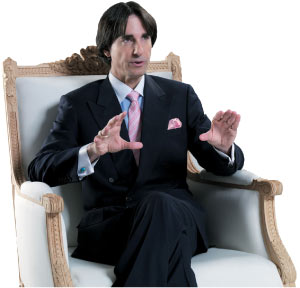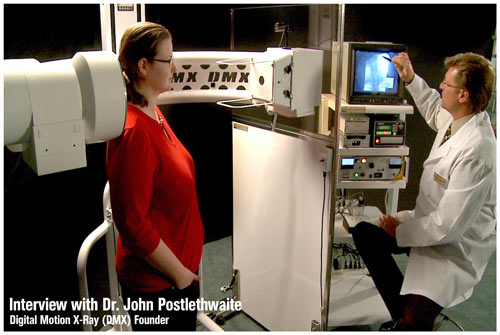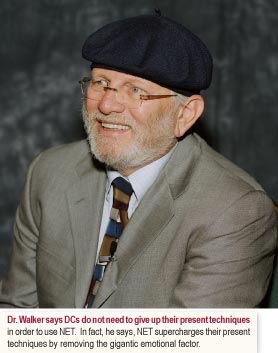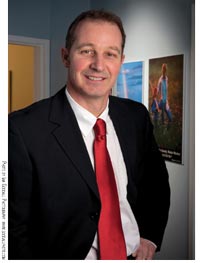Thinking About a Problem While Getting Adjusted?
Scott Walker, D.C., has been a chiropractor for over forty-three years. Frustrated with uneven results in practice, he developed the Neuro Emotional Technique (NET). In addition to having written numerous magazine articles, he has authored many technique manuals, charts, audio and video recordings and also formulated specialized mind-body homeopathic remedies. While teaching internationally with his chiropractor wife, Dr. Deborah Walker, he has also done radio and television interviews and conducted research. He is the founder of the ONE (Our Net Effect) Research Foundation, a non-profit multidiscipline research organization dedicated to doing scientific research on NET.
In the United States, the NET Basic seminar is approved for twelve hours of continuing education hours for chiropractors in most states.
Dr. Walker is credited with a good sense of humor and making learning a fun experience.
In an interview with The American Chiropractor (TAC), Dr. Scott Walker talks about NET’s past, present and future.
TAC: What is NET?
Walker: NET is a simple mind-body stress reduction intervention aimed at improving behavioral and physical problems, such as in chronic injuries, subluxations, pain, worry, anxiety, depression, etc.
TAC: How did you develop this technique?
Walker: In a state of frustration, insecurity and, thankfully, curiosity, NET was eventually developed. Initially I felt frustrated because some patients got well, while others didn’t. I also felt insecure because I didn’t have a satisfying answer for myself or my patients who asked as to why their conditions didn’t respond or why they kept coming back. I was curious, however, and my search took me to “stress” and the body’s conditioned emotional reaction to stress. The interesting thing was I, through reading neuroscience articles, found the emotional response to be physiologically based and not psychologically based! That was lucky, because I don’t know very much about psychology, and I was not about to make a career out of talking, talking, and more talking to patients about their problems! Please save me from that! On the other hand, we, as chiropractors, are well versed in dealing with physiology. In a nutshell, NET works by having the patient think-feel about their pain/issue while a special vertebral adjustment is given. They do 90 percent of the work.

TAC: Could you tell our readers a couple of the most prominent studies that have been published regarding NET?
Walker: NET has many interesting studies on a surprisingly wide variety of conditions. But, then again, that is what one might expect if there were a truly effective mind-body technique. We have a Randomized Control Trial (RCT) study on Low Back Pain through Macquarie University, which was presented to the International Congress of Complementary Medicine this year, and we are just finishing a much larger study (it will be the most comprehensive yet in all of chiropractic) on low back pain, complete with urine and blood immune markers. In chiropractic, I guess we would expect that. But more surprising perhaps, NET has RCT’s (one out of Oxford) on phobias, trigger point resolution, and we have other studies on polycystic ovary, ADD-ADHD, hypothyroidism, separation anxiety, hypercholesteremia, etc. We also did an interesting survey/treatment study on anxiety/depression (using the DRAM instrument) that was remarkably favorable. And, in addition, this study had the shocking finding that, in the random (188 consecutive patients) chiropractic pre-treatment group population, 34 percent were “at risk” and only 23 percent were normal. This finding strongly suggests, in our regular chiropractic patient populations, over a third of our patients are in deep emotional trouble. Fortunately, however, there was significant improvement after the NET intervention.


This reminds me of a published study I did (it was international in scope) which demonstrated that 90 percent of DC’s feel the emotional component of health to be important, yet less than one-third of them had a technique to intervene. Perhaps, for outright interest in studies, maybe the most prominent study is the one we are presently doing on the body stress/trauma related to a patient who receives a diagnosis of cancer (the pronounced diagnosis, itself, is often as shocking as PTSD). We already did a pilot study at Thomas Jefferson University’s Myrna Brind Center of Integrative Medicine and Hospital. This pilot study has been published and, although the blood sample was too small to include, we were delighted to see the immune markers, especially Interleukin 10, dramatically improved, which is also what the preliminary results in the large low back study are now showing. We are now doing a larger study and, who knows, we might have THE profession with the most influence on the immune system.
TAC: What does it take to really understand the core concepts of NET?
Walker: For actually doing the technique, it takes twelve hours of training in a seminar setting with hands-on workshop. Pretty straight forward. But to actually understand NET in depth, one has to be ready to throw out most of the outdated neurophysiology that was learned in school. For example, we may have learned that emotions are psychological, but now we know they are not; they’re physiologically based. We need to see the inter-relatedness not only between the emotional response and the immune system as in psychneuroimmunology, but also the digestive, cardiovascular, dermatological, and hormonal systems, to name a few. A few basic primers are the books Molecules of Emotion by Candace Pert and the excellent Biology of Belief by Bruce Lipton. Then follow all the incredible advances in neuroscience—advances that are validating chiropractic.
TAC: What would be the ideal patient for NET? Is there an ideal?
Walker: Anyone who is experiencing a stubborn physical problem, or anyone is experiencing stress or who has been under significant stress in the past, or has the manifestation of behavioral or health issues with no apparent cause, or someone who has a health challenge that is not resolving with standard chiropractic care, or someone who has emotional blocks to success in their life or health.

TAC: What type(s) of diagnostic testing procedures do you use (i.e., X-ray, etc.) and why?
Walker: We encourage our practitioners to retain all of their present techniques and diagnostic instruments and to use NET as a supercharger to make their present techniques work even better. Our present chiropractic techniques work three to four times better when a compromising emotional factor is neutralized. Although it’s not essential for doing the technique, we recommend peer-reviewed validated questionnaires, and any of the standard clinical and lab tests for the hypothalamic-pituitary-Adrenal (HPA) axis. While these are not essential for actually doing NET, they can give interested practitioners confidence as they monitor the progress.
TAC: What other therapeutic modalities do you include when treating a patient?
Walker: We use the metaphor of the four bases of a baseball diamond, calling it the Home Run Formula to Health. Doctors need to make sure the patient is safe at each base by 1.) providing good structural work, 2.) addressing toxins, 3.) balancing biochemistry, and 4.) de-stressing conditioned emotional responses that are affecting the body. NET practitioners are encouraged to use their structural techniques, as well as specifically formulated homeopathics to detoxify the body and nutritional support to balance biochemistry. Of course, NET practitioners use NET to address the physiology of unresolved emotional stressors.

TAC: Tell us two of your most amazing patient success stories.
Walker: We, all of the NET instructors, have seen many, MANY cases at NET seminars where chiropractors come with their own unresolved low back pain of twenty-plus years and are immediately resolved after a five-minute NET intervention. It’s amazing in that chiropractors have low back pain in the first place, and it’s really amazing that they can resolve on the spot. The same can be said for other afflictions on these sophisticated DC health-care consumers. I’d tell you of others, but risk losing credibility!
TAC: What has really impacted your growth as a chiropractor and that of your practice?
Walker: For me it’s not what, but rather who. My heroes have been Drs. George Goodheart, Jimmy Parker, Major DeJarnette, Ray Nimmo (“Muscles move bones, bones don’t move muscles”), and Robert Riddler. I also love to read DD Palmer and BJ. These guys are all gone now. Presently, I also look up to our chiropractic researchers who are laying the scientific foundation for a whole new exciting era in chiropractic.

TAC: Dr Walker, what have you been able to accomplish with your work that you are the most proud of?
Walker: I am proud of our 6,000 plus NET practitioners in over thirty countries around the world delivering cutting edge chiropractic every day. I’m proud because they were forward thinking and saw the value of NET before the scientific research validated it. They cared that much about their patients, and they donated money for research based on what they saw clinically. I am proud to be in the same profession.
TAC: Explain the relationship between psychologists and chiropractors. Is there a creative exchange of information, etc?
Walker: Yes, although we like to smile and say the “issues are in the tissues,” there are often psychological aspects of some problems we encounter which need talk-it-out reasoning and counseling. And, with the emergence of the mind/body or biopsychosocial model, these psychotherapists are very ready to refer to NET practitioners to get their client’s nutrition balanced, structurally adjusted, etc.
TAC: Who/What has been the greatest influence on the way you practice?
Walker: Aside from my heroes I mentioned, I am ever grateful for being raised way out in the country where I learned from nature, my greatest teacher. I also went to school in a two-room schoolhouse where I was unhurriedly able to absorb the fundamental building blocks of knowledge. My father, a mechanic, patiently taught me how things work and my mother, a nurse, taught me how to care—combine those two and you get a chiropractor.
TAC: Throughout the ages, there have been many great healers. Whose approach would you like the most?
Walker: That’s easy, Hippocrates, for separating healing from magic; the Yellow Emperor emblematic for the East’s wisdom about nature and healing forming a great basis; and then the brilliant medical heretics, Paracelsus, Semmelweis, Hahnemann, and DD Palmer.
TAC: What are your goals for the chiropractic profession?
Walker: To make DD Palmer’s paradigm, “The determining causes of disease are traumatism, poison, and autosuggestion,” and “moving thots (sic) produce disease—malice, revenge, remorse, grief, worry, spite, etc.”—into a rock solid, scientifically validated, pragmatic and prosperous profession. DD saw it from afar. The 19th century biomedical model has failed miserably; the biopsychosocial (BPS) model is now the predominantly acknowledged viable model. Essentially the BPS was, and is, DD Palmer’s paradigm. But we are catching on. The stress factor is there and it is now being acknowledged. There are other techniques besides NET which, depending on the DC’s predilections, can help practitioners and are helping with stress. Such examples are Bio Energetic Synchronization Technique (B.E.S.T.) and Network Spinal Analysis. In addition, Applied Kinesiology and Total Body Modification (TBM) and, John Amaro’s International Academy of Medical Acupuncture (IAMA) have unique approaches.
TAC: Any final words for our readers?
Walker: It’s been a hard fight, but we DC’s have done well. We have kept vitalism alive in the face of medical and legislative persecution and commercial discrimination. We have fought with them and, of course, being chiropractors, fought with each other, but we have not given up on fighting for our patients’ welfare, for what we have seen helps them. I encourage everyone to financially support our colleges’ scientific research departments. Science is the only currency that spends these days. It better, as we enter into ever more evidenced based third party pay, including a looming federalization. As you know, we are usually at the very end of the Medicare line with our hands out. We are going to beat traditional medicine using the very weapon they have used against us, science—only better. It used to be the medical establishment would say they had research and that we did not. Now, we can say to them, we have research demonstrating that pathophysiology can be eliminated through natural drugless means, thus restoring true health. Furthermore, we can say, “Your medical research may show a certain drug has the ability to force a certain effect; however, that particular medical mechanical paradigm has nothing to do with the patient actually healing.” Medicine, indeed, has a science of sorts, but a puny unworkable philosophy of health. Outside of emergency and heroic life saving measures, medicine has even been deadly at times. Not so with chiropractic. I will be speaking at the World Federation of Chiropractic in Montreal in April, 2009. Please come hear what NET science through The O.N.E. Research Foundation has provided us, and learn what other top-notch chiropractic researchers in the various colleges have also achieved in other realms.
You may contact Dr. Scott Walker at N.E.T., Inc., 5651 Palmer Way, Suite C, Carlsbad, CA 92010, by calling 1-800-888-4638, emailing [email protected], or visiting

 My family had always been chiropractic-oriented family and believed each of our innate abilities flourished throughout our lives whenever the life force was made to flow freely with chiropractic care. That was our gospel, and one that Metallica eventually tuned in to.
My family had always been chiropractic-oriented family and believed each of our innate abilities flourished throughout our lives whenever the life force was made to flow freely with chiropractic care. That was our gospel, and one that Metallica eventually tuned in to.









 The most cost effective way to attract new patients is through relationship building. Relationship building costs virtually nothing and is simple! My analogy is, if the doctor wanted to become the mayor of his/her town, what would be the best way to become known? The answer is to meet as many people as possible.
The most cost effective way to attract new patients is through relationship building. Relationship building costs virtually nothing and is simple! My analogy is, if the doctor wanted to become the mayor of his/her town, what would be the best way to become known? The answer is to meet as many people as possible.  The biggest marketing problem for chiropractors these days is the inclination to cut back and turn inward when things tighten up, often considering patient education as a needless luxury. Simply put, getting new patients is about effectively telling the chiropractic story to as many people as possible. Patient Media helps chiropractors communicate chiropractic clearly, concisely and persuasively with state-of-the-art, visually-based patient education resources, informative videos, report documents and reactivation tools. What makes Patient Media unique is that we help chiropractors see their practices and their internal and external marketing procedures from a patient’s point of view. We offer free blog posts at www.patientmedia.com, Monday Morning Motivation, magazine articles, books and audio recordings to help chiropractors understand today’s patients, focus their communications and stay on message.
The biggest marketing problem for chiropractors these days is the inclination to cut back and turn inward when things tighten up, often considering patient education as a needless luxury. Simply put, getting new patients is about effectively telling the chiropractic story to as many people as possible. Patient Media helps chiropractors communicate chiropractic clearly, concisely and persuasively with state-of-the-art, visually-based patient education resources, informative videos, report documents and reactivation tools. What makes Patient Media unique is that we help chiropractors see their practices and their internal and external marketing procedures from a patient’s point of view. We offer free blog posts at www.patientmedia.com, Monday Morning Motivation, magazine articles, books and audio recordings to help chiropractors understand today’s patients, focus their communications and stay on message. The number one challenge that practitioners in the market place appear to be experiencing is in the area of patient retention. At ProPractice Partners, we work with our clients on the quality of their communication. We know that the quality of patient compliance can be directly related to the quality of communication. The more the doctor is prepared to “give direction, and hold the patient accountable,” the more the patient connects with the doctor.
The number one challenge that practitioners in the market place appear to be experiencing is in the area of patient retention. At ProPractice Partners, we work with our clients on the quality of their communication. We know that the quality of patient compliance can be directly related to the quality of communication. The more the doctor is prepared to “give direction, and hold the patient accountable,” the more the patient connects with the doctor.  Get out of your office and introduce or re-introduce yourself to the community by visiting one shopkeeper at a time. It is a numbers game and the goal is to double the people who know you, not the number of people you know…. It is that simple. Don’t forget to write them thank-you letters after you return to your office, adding your business card so they are reminded of whom you are and where you practice.
Get out of your office and introduce or re-introduce yourself to the community by visiting one shopkeeper at a time. It is a numbers game and the goal is to double the people who know you, not the number of people you know…. It is that simple. Don’t forget to write them thank-you letters after you return to your office, adding your business card so they are reminded of whom you are and where you practice.  The biggest problem most chiropractors face is the inability to produce “overlapping” in their marketing efforts. New patients come from one of four actions: Energy on the inside, energy on the outside, money on the inside or money on the outside of your practice. Increasing new patients is always the result of proper overlapping of all four marketing actions organized in six to eight week programs. This process is known in WLP as periodization.
The biggest problem most chiropractors face is the inability to produce “overlapping” in their marketing efforts. New patients come from one of four actions: Energy on the inside, energy on the outside, money on the inside or money on the outside of your practice. Increasing new patients is always the result of proper overlapping of all four marketing actions organized in six to eight week programs. This process is known in WLP as periodization.  Roll the Video! Online communications are changing. Chiropractors are now sharing information about their practices using podcasts, online video and, now, live video streaming. With the web evolving to include these richer media channels, the savvy marketer must learn how to listen, understand and use the same media. Broadband penetration is 70% in the US, making streaming video a “must” marketing tool for your practice. One hundred twenty-three million Americans watch at least one video a month, and three-quarters tell a friend about one. Video provides you with an enormous opportunity to engage, educate and entertain (yes, entertain) your patients: the “Three E’s” of successful marketing. Chiropractors are producing specialized videos to help their patients get the most from their chiropractic experience. These video messages include everything from virtual tours of the practice, welcome messages from the doctor, new patient orientation sessions and even customized home exercise programs, all streamed over your practice’s website.
Roll the Video! Online communications are changing. Chiropractors are now sharing information about their practices using podcasts, online video and, now, live video streaming. With the web evolving to include these richer media channels, the savvy marketer must learn how to listen, understand and use the same media. Broadband penetration is 70% in the US, making streaming video a “must” marketing tool for your practice. One hundred twenty-three million Americans watch at least one video a month, and three-quarters tell a friend about one. Video provides you with an enormous opportunity to engage, educate and entertain (yes, entertain) your patients: the “Three E’s” of successful marketing. Chiropractors are producing specialized videos to help their patients get the most from their chiropractic experience. These video messages include everything from virtual tours of the practice, welcome messages from the doctor, new patient orientation sessions and even customized home exercise programs, all streamed over your practice’s website.  The single biggest barrier that is ongoing in practice is to stay motivated and not get discouraged in the marketplace.
The single biggest barrier that is ongoing in practice is to stay motivated and not get discouraged in the marketplace.  Implement a Healthy Generations Campaign in your practice and begin attracting the families of the people that are already coming in. This includes the traditional family members such as the moms, dads, children and grandparents as well as the inner circle families of your patients, which includes their friends, co-workers and community relationships. Put up a Generations Board with pictures of any traditional or inner circle families who are under your care. When you do this, instead of getting one new patient at a time, you will begin to get 5, 10 and 15 new patients at a time. I know this may sound too simple, but that is the brilliance of it. Focus your report of findings, daily visit procedures and marketing efforts to produce these types of results and you will experience substantial growth with minimal to no expenses, even in this crazy economy.
Implement a Healthy Generations Campaign in your practice and begin attracting the families of the people that are already coming in. This includes the traditional family members such as the moms, dads, children and grandparents as well as the inner circle families of your patients, which includes their friends, co-workers and community relationships. Put up a Generations Board with pictures of any traditional or inner circle families who are under your care. When you do this, instead of getting one new patient at a time, you will begin to get 5, 10 and 15 new patients at a time. I know this may sound too simple, but that is the brilliance of it. Focus your report of findings, daily visit procedures and marketing efforts to produce these types of results and you will experience substantial growth with minimal to no expenses, even in this crazy economy. 
 Dr. Fletcher is a 1980 graduate of Canadian Memorial Chiropractic College with a Fellowship in Chiropractic Sport Sciences. He trains and teaches thousands of chiropractors to interpret and communicate the power of chiropractic care, using CLA’s Insight scanning technologies. He continues to practice daily, while developing new strategies for coaching chiropractic offices towards excellence.
Dr. Fletcher is a 1980 graduate of Canadian Memorial Chiropractic College with a Fellowship in Chiropractic Sport Sciences. He trains and teaches thousands of chiropractors to interpret and communicate the power of chiropractic care, using CLA’s Insight scanning technologies. He continues to practice daily, while developing new strategies for coaching chiropractic offices towards excellence.